|
Home Machine Tool Archive Machine-tools Sale & Wanted Model N a number of Parkson milling machines engineer is available by phoning 0793-944052 |
|
Resembling, in some respects, the layout of the American Van Norman and Swedish Abene milling machines, the substantially constructed Parkson "Adapta" was intended to be a rigid yet versatile machine able to be used as both a vertical and horizontal miller. Weighing a substantial 2.2 tons (2191 kg) its makers described it as: A machine that need never stand idle when there is milling to be done - and intended the design to reduce to a minimum the amount of time spent converting from one set-up to another. |
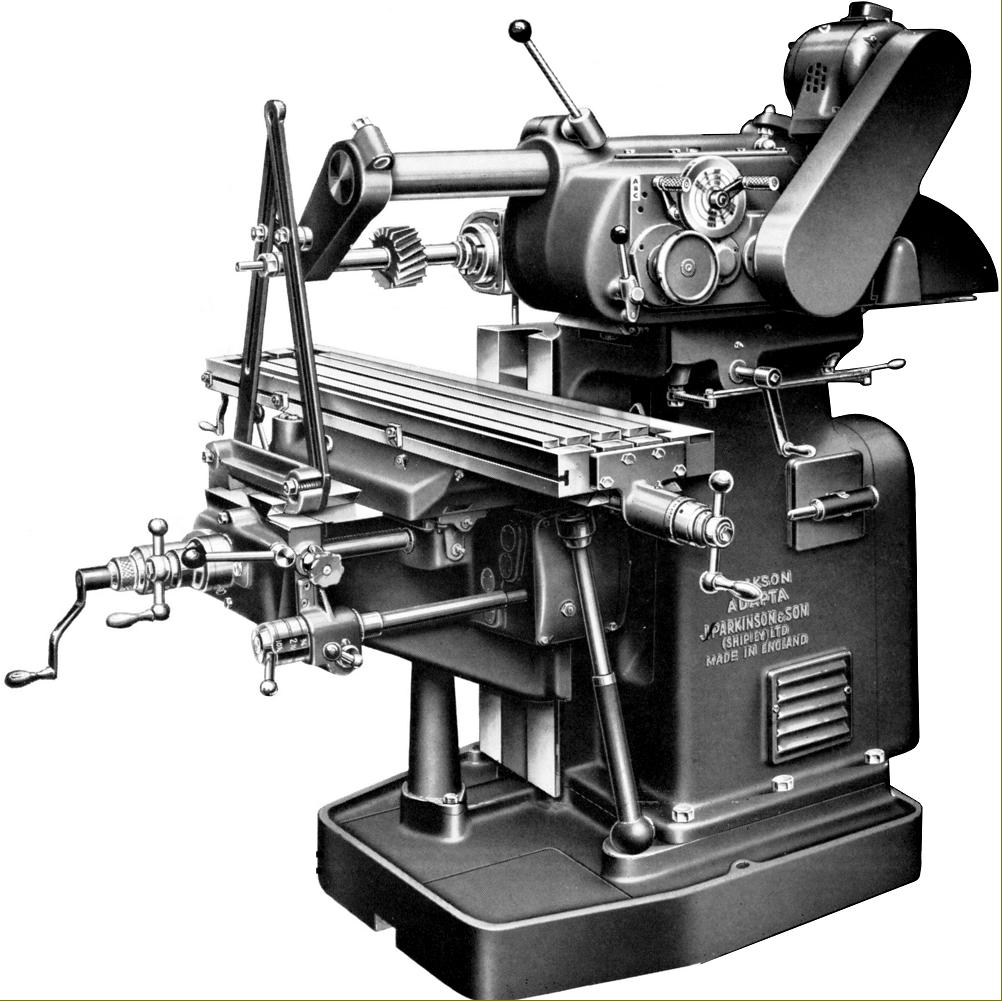
|
|
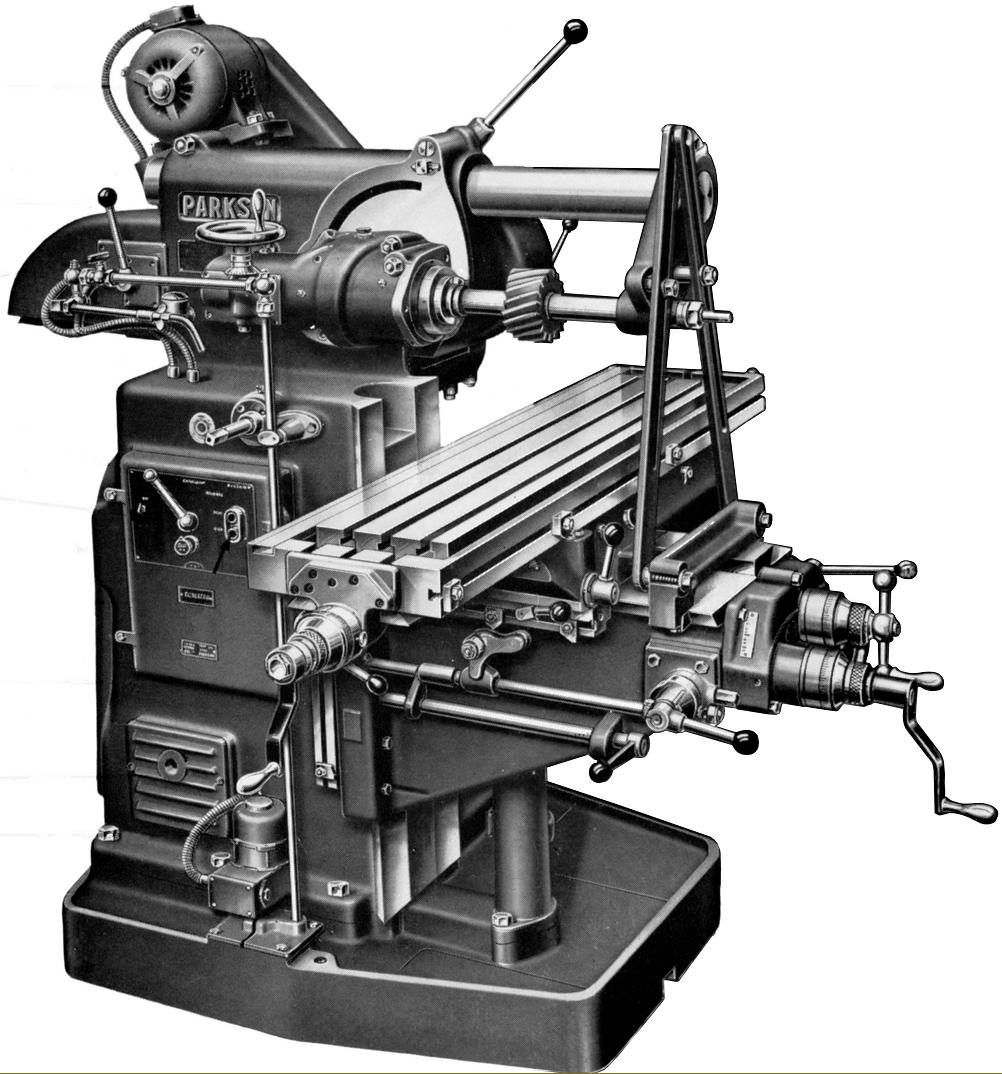
|
|
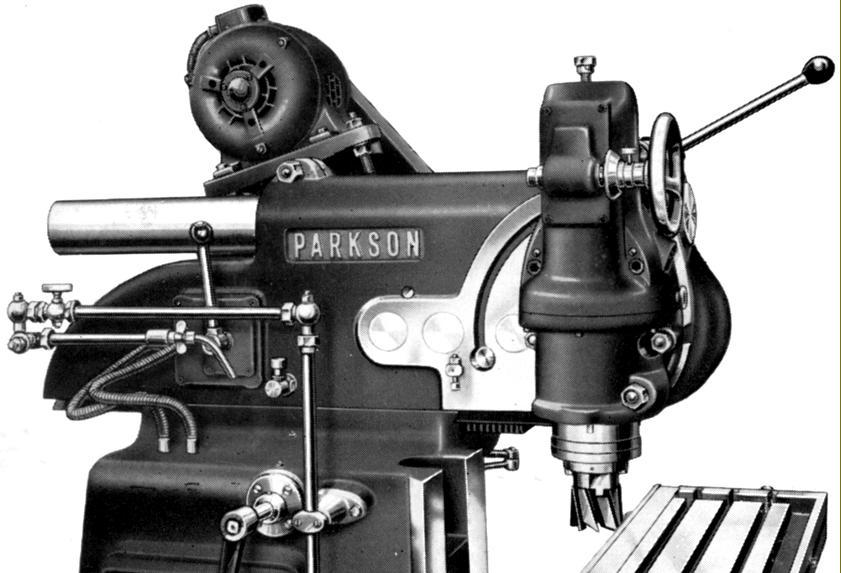
|
|
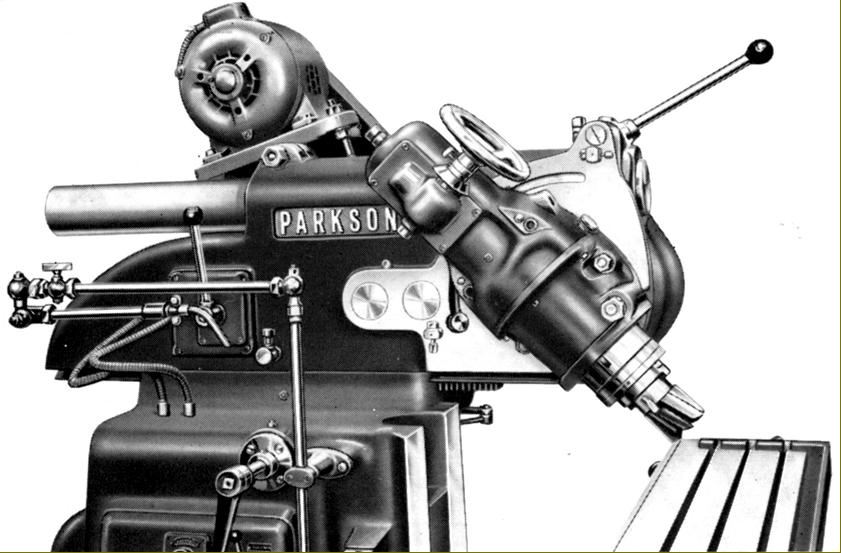
|
|
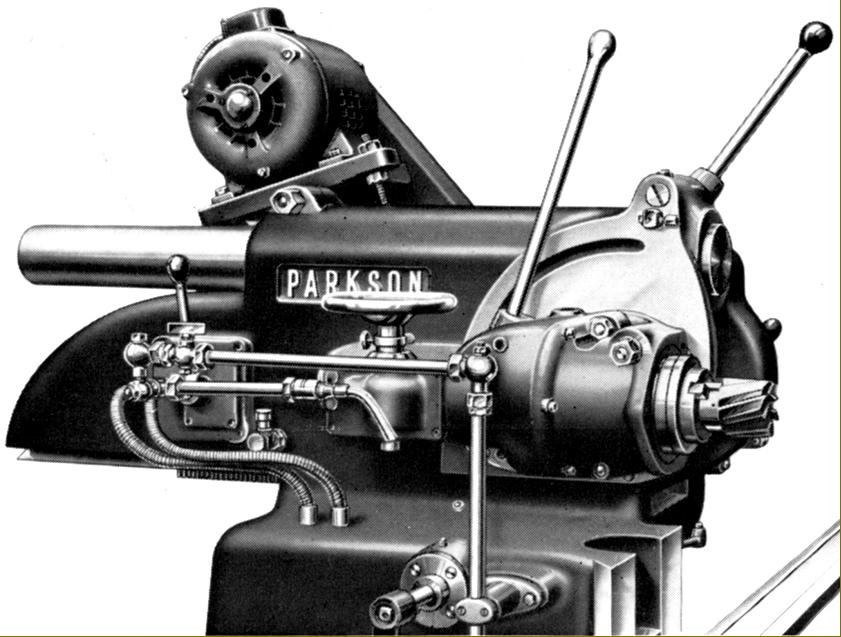
|
|
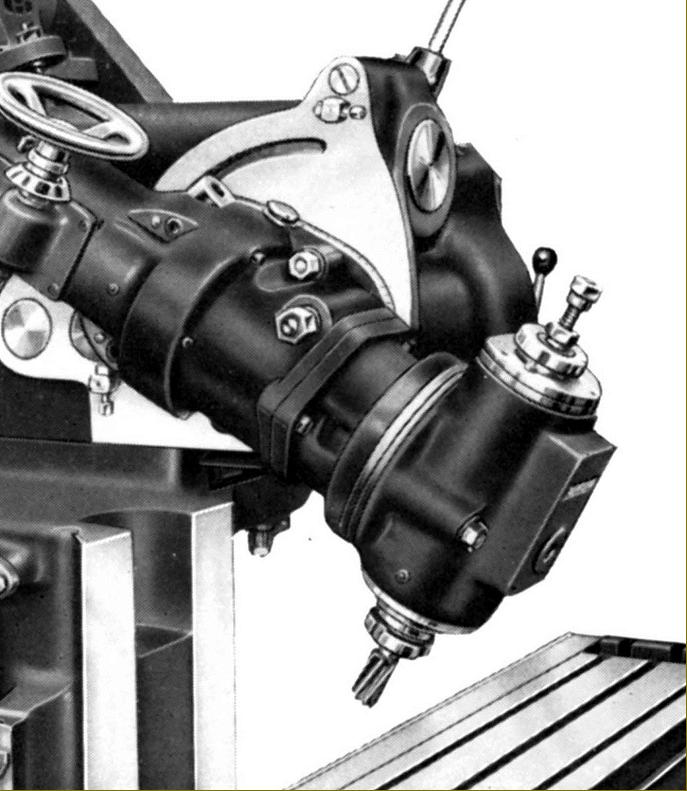
|
One important accessory was the Sub-head. This bolted, at right-angles, to the end of the normal vertical head and could be swivelled thorough 360°. By combining the ability of the ordinary head to be moved thorough 180° the sub-head allowed a cutter to approach a job from almost any angle, making it possible to use ordinary (and so cheaper) end-mills and slot drills to cut complex shapes. |
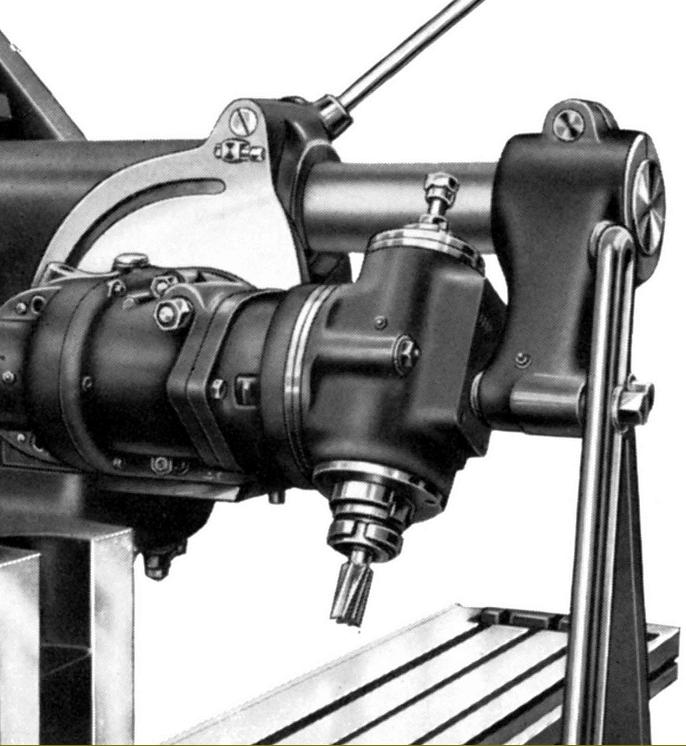
|
|
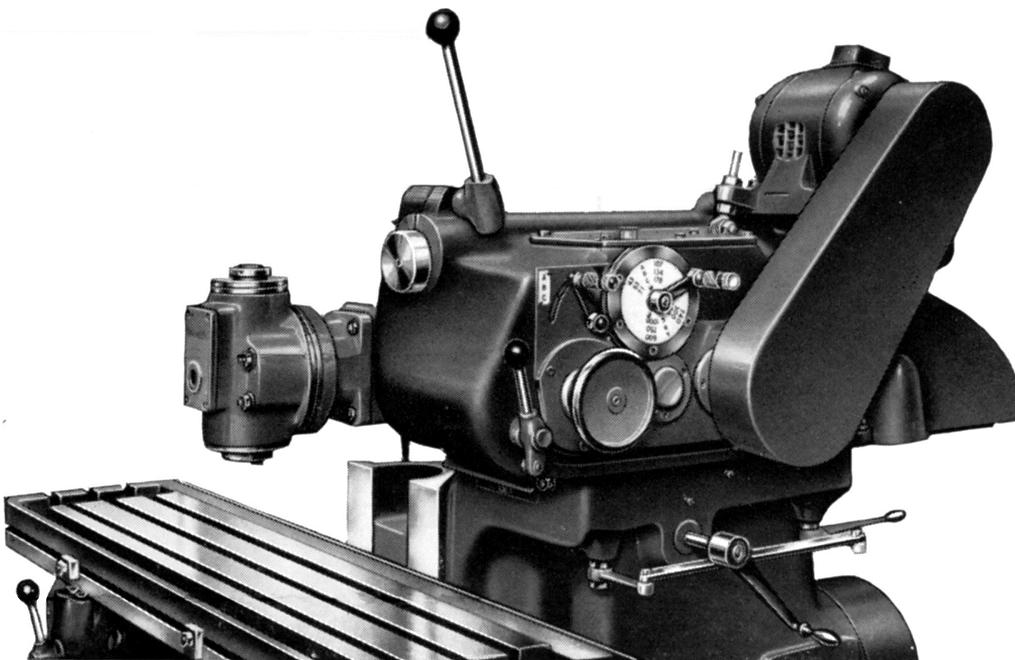
|
|
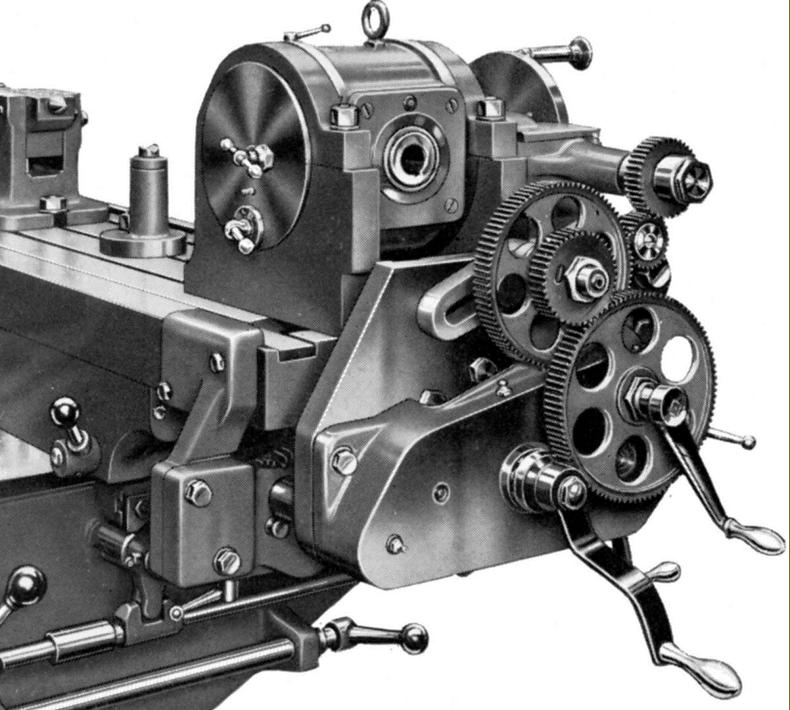
|
A useful device for special work was the Short Lead and Feed Reducer - shown here connected to Universal Diving Head. Bolted to the end of table (shortening the travel by around 6 inches) the device contained gears with a 20 : 1 reduction that coupled to the table feed screw. The operator was thus able to move the table with great precision, if rather slowly. However, its main use was in conjunction with the power-driven dividing head (when it allowed screw threads or spirals of short single or multiple lead to be milled when the spindle had to make a complete revolution during a relatively short longitudinal movement of the table (so making the speed of cut far too high). By providing a very slow rate of table travel (the spindle, connected by changewheels to the feed screw still rotated at the same speed) it became possible to mill threads and spirals that would otherwise have been unobtainable - the intended range of leads being between 0.1 and 2 inches. |
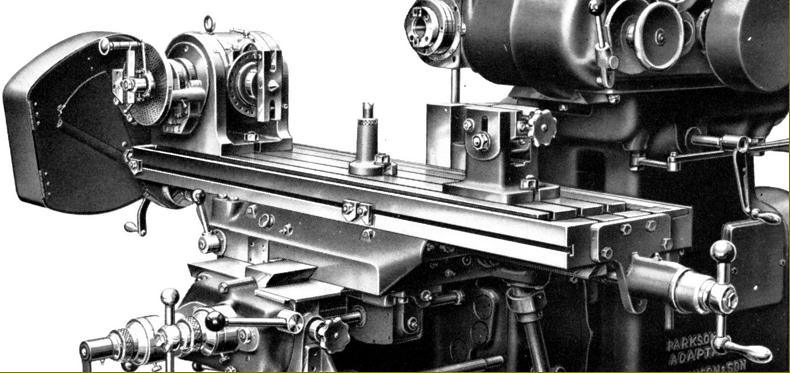
|
Universal Dividing Head with tailstock and centre support. With a 6-inch centre height the unit would admit 30 inches between centres and allow work up to almost 26 inches long to be milled. Equipped as standard with a No. 10 Brown & Sharp taper (a No. 4 Morse was optional) the spindle had a through bore of 1.125" |
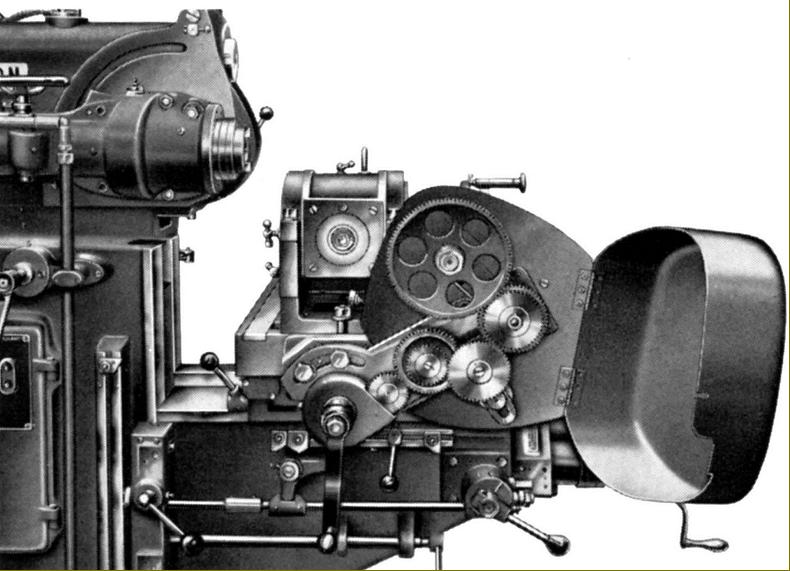
|
|
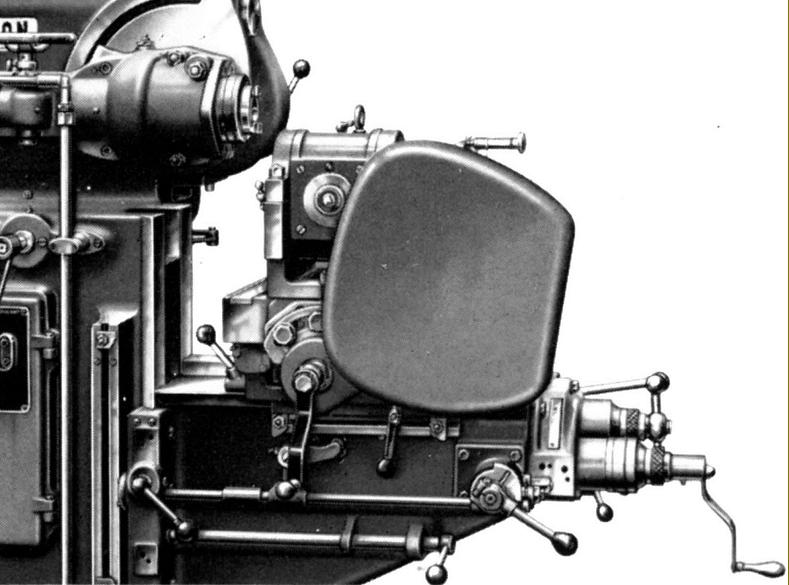
|
|
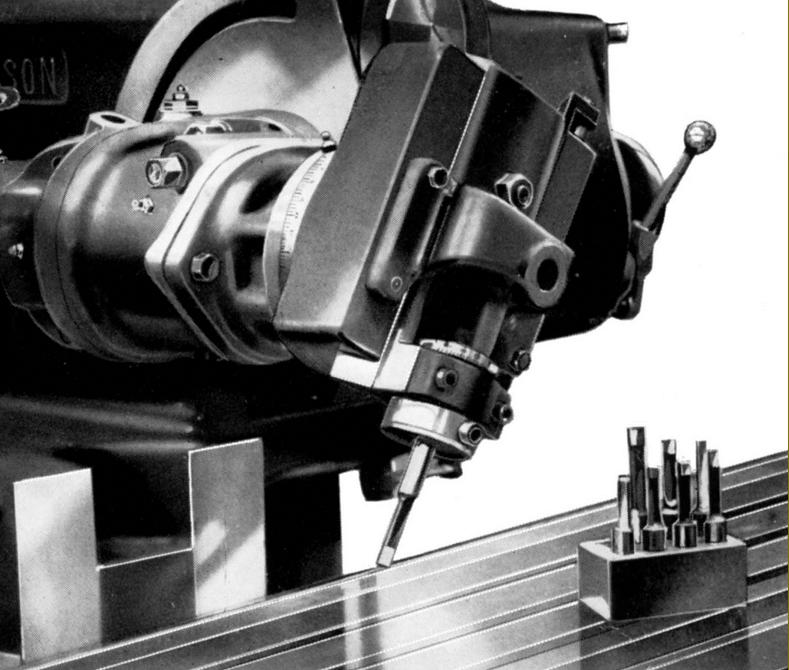
|
|
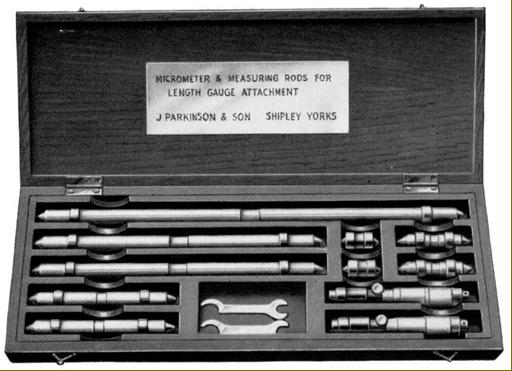
|
|
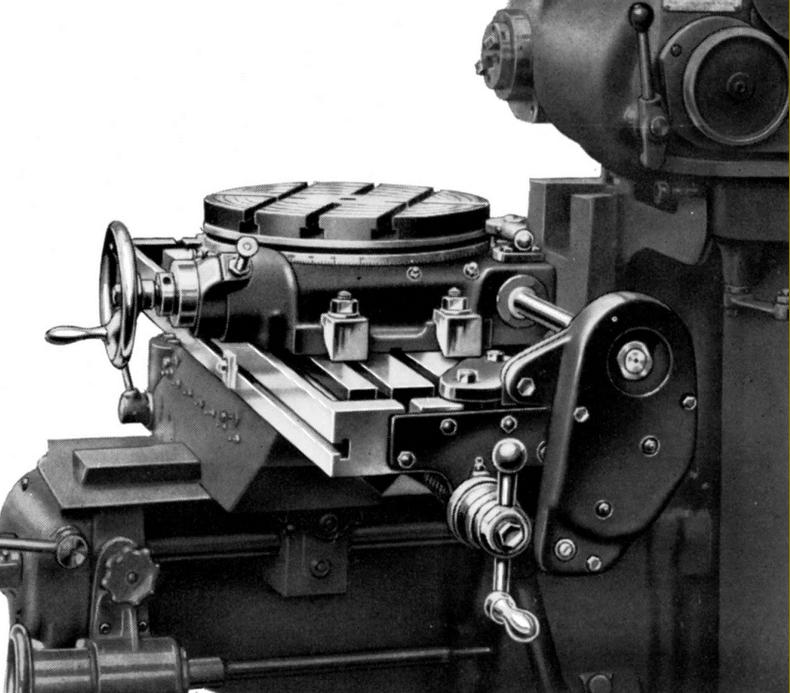
|
Rotary Table. Two sizes were available: 10" and 14" in diameter. The 10" was made for hand-feed only but the 1`4" could be coupled to a power-feed shaft parallel to - but driven independently from - the table feed screw. Changes in the rate of rotation were made from the ordinary power-feed controls with a single lever for stop, start and reverse. It was possible to set up trips to disengage the feed and a free rotation of the table was possible by the usual means of disengaging the worm. |
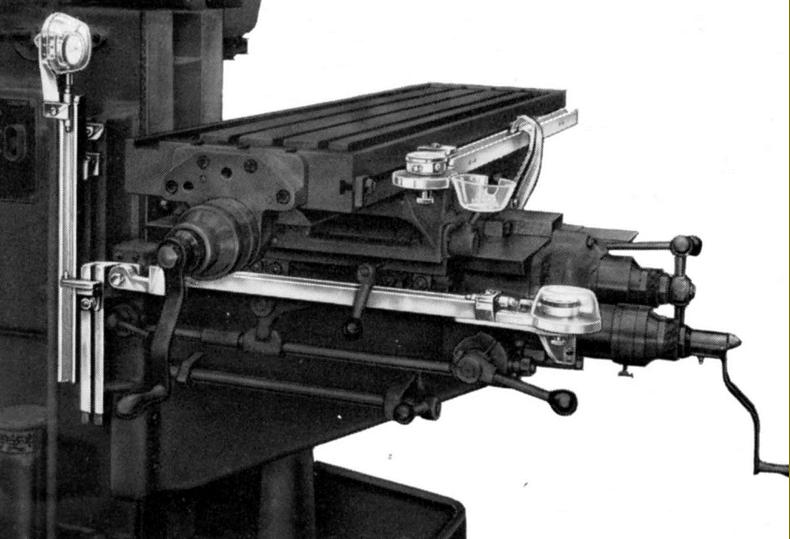
|
Holders and protective covers for precision micrometer length rods and dial-test indicators. The length rods sat in V-shaped grooves with one end against the plunger of a dial indicator and the other against an adjustable stop. |
|
Model N Home Machine Tool Archive Machine-tools Sale & Wanted |
||